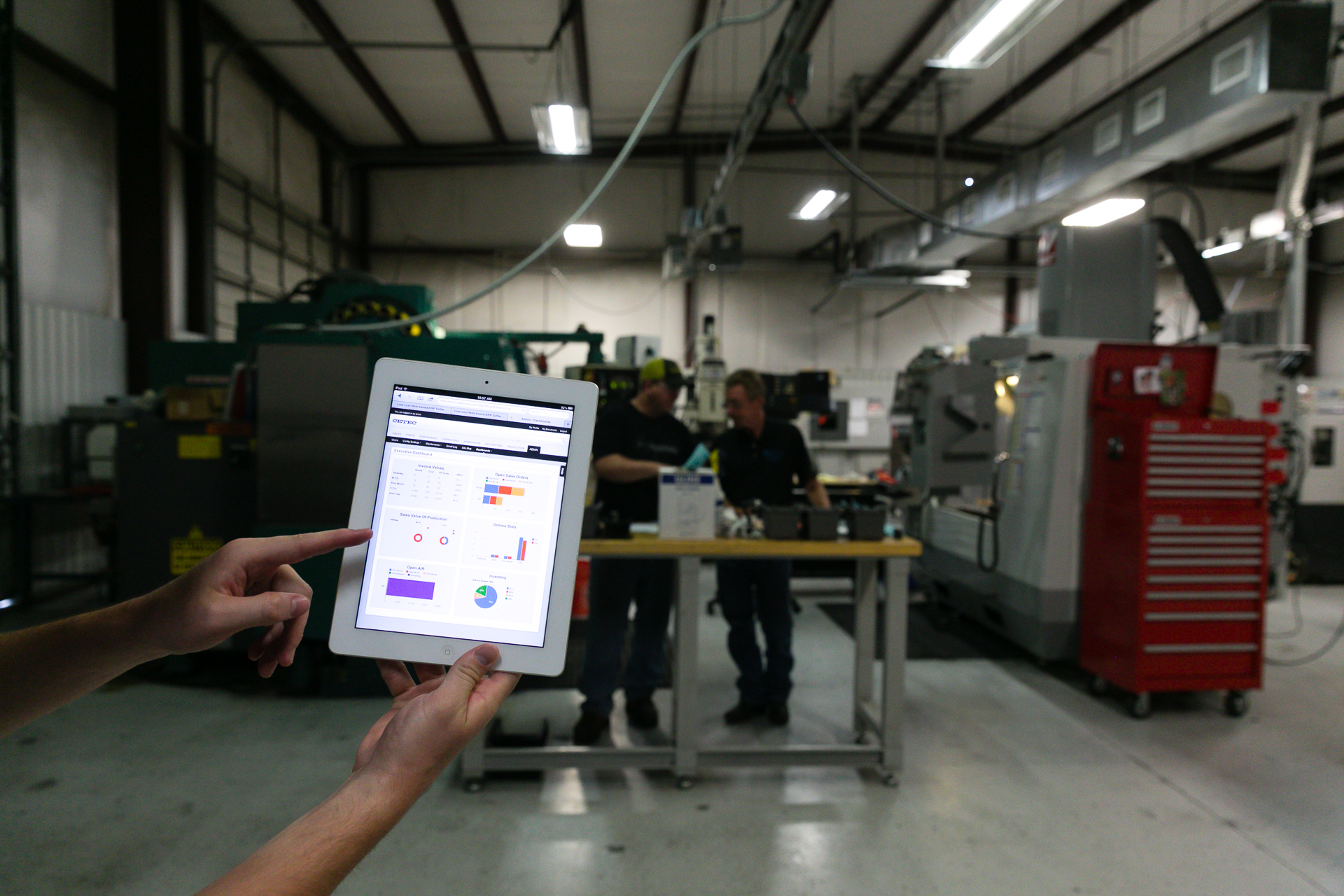Digital Transformation with ERP
It’s hard to believe it’s been almost two years since the onset of the COVID-19 pandemic. Manufacturers all over the world felt (and some still continue to feel) the effects of parts shortages and production delays, and world events forced many companies to realize they didn’t have an efficient system in place to operate remotely. In fact, in a December 2020 survey of worldwide manufacturing leaders, 47% of businesses reported they were unable to function due to operational staff reliance on-premise. Many companies were forced to adapt and digitally transform the way they conducted business in order to stay relevant.
In the sixth annual State of Manufacturing Report, 95% of businesses said that digital transformation is a vital requirement for future success. While it’s not realistic for most manufacturing companies to digitally transform their entire processes overnight, it’s clear there is a great need to begin that transformation process as soon as possible to stay competitive.
How an ERP Can Facilitate the Transformation Process There’s no better way to begin digitally transforming your manufacturing business than with an ERP. Not only do ERP systems give organizations more financial visibility, but they can make business processes more streamlined, allow people to work from anywhere, and provide the data to guide executives in future company decisions. Using a modern ERP system can also make it easier to incorporate third-party systems like artificial intelligence (AI) and connect new technology like plugins.
What to Know To Make the Process Easier Many companies want to convert to a digital platform, but are scared away by the amount of money and time it can take. Sometimes companies will spend thousands of dollars on an ERP, only to have it take much longer and be way more expensive than they planned. Executives and IT managers should take the time to look at all the ERP options out there; researching and discussing what tools would be most beneficial for their employees to use within that system. An ERP system should make everything that’s going on within a company more transparent and improve the speed and quality of daily tasks. If it doesn’t do that, it’s not worth it!
Implementing the ERP Once an ERP is chosen, managers should communicate to all their employees how processes within the company will change once the selected ERP system goes live. Implementing the ERP should be fairly straightforward, but will still require a learning curve. Managers and employees alike will need to undergo extensive training to be sure they all understand the system. During the implementation process, clear expectations and KPIs should be established. Implementing an ERP can be a unifying experience for a company if done correctly. When it’s time to “go live”, here’s what to expect.
How Cetec Can Digitally Transform Your Business With our intuitive, easy-to-use platform, Cetec allows businesses to go digital without breaking the bank. Every company can test out our software with a 30-day free trial to see if it meets their needs before deciding if it’s a good fit. Because Cetec is cloud-based, it allows users to access it anytime, anywhere!

“Personally, my favorite aspect of Cetec is the web-based interface. It’s incredibly convenient to use various hardware platforms (PC, tablet, phone) and various OS systems (Linux, Windows, etc) with equal ease of access. This feature alone has dramatically improved the communication between departments and even facilities for us.” -Joshua Foraker, Honeycomb Company of America
In the State of Manufacturing Report previously mentioned, 81% of executives say that remote work has positively impacted their attitude toward flexible manufacturing arrangements.
Give your company the digital leg up it needs to succeed in your industry with Cetec ERP!
